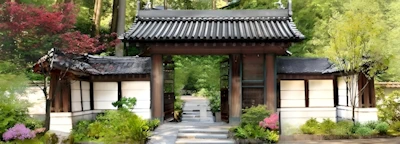Shichi-Go-San Annual Event (3, 7 yr-old girls & 3, 5 yr-old boys)NEW
Other Events At This Location
Koyasan Buddhist Temple
This Specific Event Date Has Passed
Los Angeles, CA 90012
Shichi-Go-San is a traditional rite of passage for girls of three (san) and seven (shichi) years and boys of three (san) and five (go) years old. The tradition is said to have originated in the Heian Period (794-1185) amongst the court nobles and over time passed to the samurai class. By the Edo period (1603-1868), the rite was adopted amongst the commoners and included visiting a shrine or temple to offer prayers (long and healthy life) for the children.
The Shichi-Go-San service will be held on Sunday, November 14 at 1:30 p.m. At the service, prayers will be offered for the children and the fire ritual (goma) will be conducted. Those who register for the prayer service will receive a talisman (omamori) and Chitose-ame ("thousand-year" candy). The registration fee is $30 per child. The deadline for the registration will be November 7 and applicants are encouraged to register early. Light refreshment will be provided after the service. Toyo Miyatake Studio will at the Temple to take children and/or family portraits at prices starting at $70.00.
The application can be downloaded. Please contact the Temple (213-624-1267) if you have any questions or would like further information on the service.
Application
Date and Time
Nov 14th
Time
1:00 pm - 2:00 pm: Cermony
1:30 pm - 2:00 pm: Blessing
Dress Style
Girls - Kimono
Boys - Casual to Suit
Families
Casual to dress up
From Wikipedia, the free encyclopedia
http://en.wikipedia.org/wiki/Shichi-Go-San
Shichi-Go-San (七五三, seven-five-three?) is a traditional rite of passage and festival day in Japan for three and seven year-old girls and three and five year-old boys, held annually on November 14. As Shichi-Go-San is not a national holiday, it is generally observed on the nearest weekend.
History
Shichi-Go-San is said to have originated in the Heian Period amongst court nobles who would celebrate the passage of their children into middle childhood. The ages three, five and seven are consistent with Japanese numerology, which dictates that odd numbers are lucky. The practice was set to the fifteenth of the month during the Kamakura Period.
Over time, this tradition passed to the samurai class who added a number of rituals. Children-who up until the age of three were required by custom to have shaven heads-were allowed to grow out their hair. Boys of age five could wear hakama for the first time, while girls of age seven replaced the simple cords they used to tie their kimono with the traditional obi. By the Meiji Period, the practice was adopted amongst commoners as well, and included the modern ritual of visiting a shrine to drive out evil spirits and wish for a long healthy life.
Disclaimer: Please double check all information provided on our platform with the official website for complete accuracy and up-to-date details.
Monday, 15 November, 2010
Event Contact
Event Organizer Website
Visit Organizer Website
Get More Details From the Event Organizer
Event Location Website
Visit Location Website
For More Location Details
Event Information Can Change
Always verify event information for possible changes or mistakes.Contact Us for Issues

















